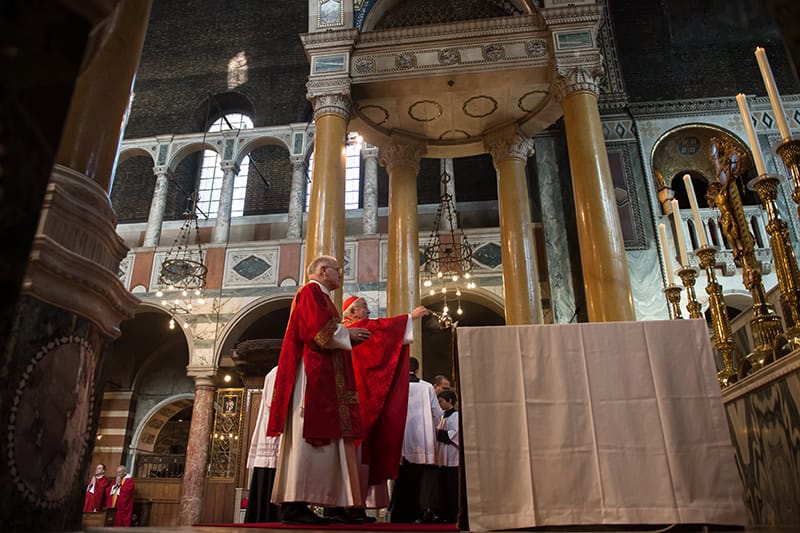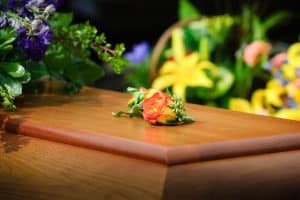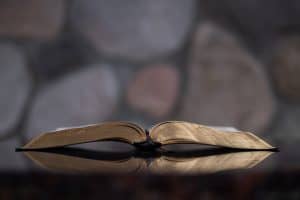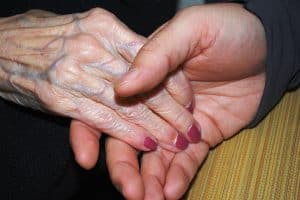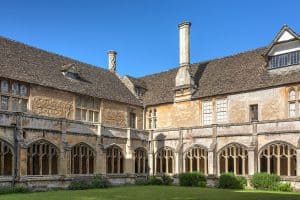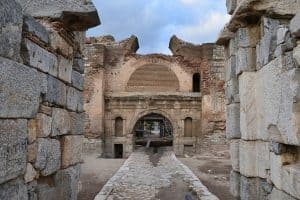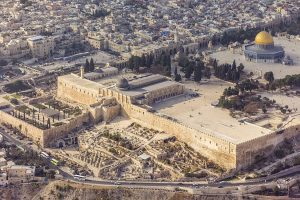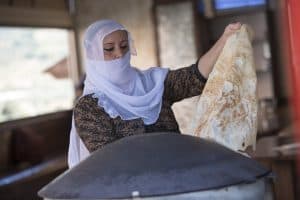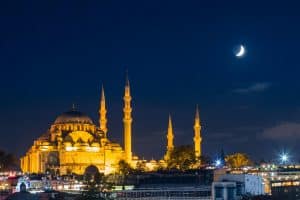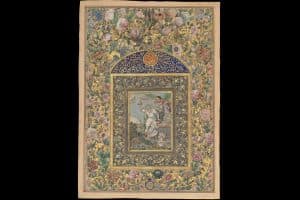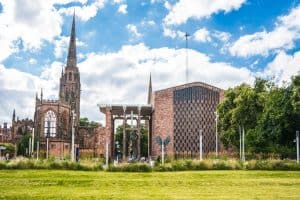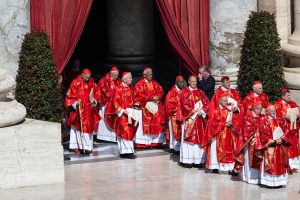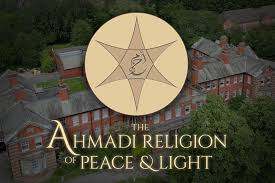Key words, titles and explanations to understand the Catholic Church
Baptism – This ceremony, initiating somebody as a Christian, is conducted by a priest or a deacon once in each person’s life. Catholics are usually baptised soon after birth. The Catholic Church recognises baptism of other Christian denominations and so a convert would not be baptised unless they had previously been an atheist or member of another religion. Baptism is conducted using water – usually small drops – with the words: “I baptise you in the name of the Father, the Son and the Holy Spirit.” The water has previously been blessed and is kept in a receptacle called a font in the church. However, in emergencies, a baptism can be conducted by any Catholic, even using water from a tap.
Celibacy – Ordained Catholic priests have to be celibate, that is, not involved in sexual relationships. However, this is called a discipline of the church and as such can be changed. It can also be adjusted. In England and Wales, there have been several occasions when married Anglican priests have been received into the Catholic Church and worked as priests. The Church advocates celibacy for priests because it believes it frees a man to completely dedicate his life to service.
Conclave – A new pope is usually elected upon the death of the office holder, although in the case of Benedict XVI, he resigned, and his successor, Pope Francis, was elected afterwards. The College of Cardinals gathers behind closed doors in the Sistine Chapel in the Vatican to cast their votes for the new pope. This gathering is known as the conclave.
Confessional – The common term for the mini-room in which confessions take place – also much beloved of film-makers. A screen divides the penitent from the priest and so the act of confession is carried out in some privacy. Nowadays some people prefer to speak to a priest, one to one, in a more normal setting. A priest can never break what is called the seal of the confessional. What he has heard in the confessional remains confidential. A priest who told anybody else what he had heard in the confessional would be excommunicated.
Confirmation – This sacrament, also received only once, is bestowed during a rite where the person is anointed with oil as a sign of having the gifts of the Holy Spirit: wisdom, understanding, counsel, fortitude, knowledge, piety, and fear of the Lord. Confirmation is seen as a completion of baptism, uniting Catholics more closely to Christ. Its significance is illustrated by the rite usually being conducted by a senior church figure, most commonly a bishop, or the abbot of a monastery.
Encyclical – This is a document of doctrine written by a pope and may concern a particular topic or region of the world. There is no set time for writing these document and popes are not obliged to write them. Pope Paul VI wrote seven in the first five years of his papacy, but never wrote another after his 1968 encyclical, Humanae Vitae, condemning artificial birth control, proved highly controversial. John Paul II wrote 14; so far Pope Francis has issued two.
Holy Communion – The Catholic Church sees Communion, or the Eucharist, as “the source and summit’ of church life. Receiving Communion whether as both bread and wine or just in bread is a way of becoming intimately connected to Christ. But the Church also sees Communion as a sign of a bond with God and a sign of unity with others also receiving Communion. Although it is a memorial of Christ’s Last Supper with his disciples and of his sacrifice and crucifixion, it is also a celebration of God’s love and a thanksgiving (seen in the word Eucharist, which comes from the Greek for thanksgiving). Catholics are encouraged to receive Communion as often as possible and some devout people go to Communion daily, not just on Sundays. At one time, people had to fast for 12 hours before Communion but this changed to one hour after reforms in the 1960s. Only Catholics can receive Communion in a Catholic church and only those in good standing. For example, a person who has been divorced and remarried is supposed not to do so, although some priests are more generous in their interpretation of the rules. This issue has caused major rows in the Church in recent years.
Holy days of obligation – Catholics can attend mass every day if they wish but they are obliged to attend mass on Sundays and what are known as holy days of obligation. These are the Church’s greatest feasts. In the Catholic Church in England and Wales, the holy days of obligation are: Christmas Day, Epiphany on 6 January (marking the arrival of the three wise men at the stable in Bethlehem), the Annunciation (commemorating the Virgin Mary’s agreement to become the mother of Christ) on 25 March, Saints Peter and Paul on 29 June, the Assumption (marking Mary’s bodily ascent to heaven) on 15 August, All Saints on 1 November, and the Immaculate Conception of the Virgin Mary on 8 December.
Marriage – In the Catholic Church, marriage is recognised as a partnership between a man and a woman for their good and for the procreation and education of offspring. A marriage takes place either during a nuptial Mass or a shorter service. If a Catholic marries another baptised Christian, this is known as a mixed marriage. If a Catholic marries someone not baptised, this is called disparity of cult and requires special dispensation. Catholic marriage is considered lifelong and indissoluble and the Church does not offer divorce. It offers annulment – that the marriage did not properly take place – if someone was coerced, or unable to freely give consent because of, say, illness, or was too immature.
Mass – This most important church service for Catholics recalls Jesus’s Last Supper – the meal he ate with his disciples before he was arrested, tried and crucified. It comprises a gathering of people, music, readings from the Bible, and consecration of bread and wine. This central act is known as the Eucharist and the taking of bread and wine, once they have been consecrated, is known as receiving Holy Communion. Catholics believe that Christ sacrificed himself for all people when he died on the cross and that the bread and wine become his body and blood when blessed by a priest. In this sense the bread and wine is also a sacrifice, which is why the Mass is often called the Holy Sacrifice of the Mass.
Ordination, or holy orders – Unlike the Church of England, ordination in the Catholic Church is only available for baptised men and the sacrament is given only once. Only priests celebrate Mass, especially the consecration, and acts in persona Christi – in the person of Christ – to the people.
Pope– The Pope is the leader of the world’s Catholics. Each pope is elected by cardinals of the church and the succession of popes is believed to directly lead back to Peter, Christ’s apostle. This Catholics believe the Church has a direct link to Christ and his apostles and thus has the authority to teach in the name of Christ.
Real presence – Catholics believe that Christ is truly present in the Eucharist. The Church recalls Jesus’s command at the Last Supper: “Do this in memory of me” and believes that the eucharistic meal is not just a memorial but is a way of making Christ present to us once more. While Christ’s sacrifice on the cross was one event in history and cannot be repeated, the sacrifice of the Mass happens over and again and is a way of enabling people to become connected to him.
Reconciliation, previously known as confession – This is one of the most popular Catholic traditions – at least, popular with film-makers seeking a way of communicating Catholicism. Confession as it was traditionally known is a practice whereby Catholics confess their sins to a priest and seek forgiveness. The priest, if he believes the penitent is truly sorry, will give him or her absolution, otherwise known as forgiveness. The new term, reconciliation, focuses more on forgiveness. A penitent is also asked to repeat a prayer called the act of contrition and will be given an act of penance to carry out, usually the reciting of other prayers. The penitent attends confession after making an examination of conscience and is then obliged to recall to the priest all the most serious sins, although Catholics also confess more minor misdemeanours.
Sacraments – The phrase that many Catholics use to define what a sacrament is “an outward sign of inward grace”. Catholics believe that when you receive one of the sacraments, you are receiving divine influence in your life. Some sacraments are received only once while others can be received over and again. All of them offer an opportunity for spiritual growth and healing. They are: baptism, Holy Communion, confirmation, reconciliation (confession), sacrament of the sick, ordination, and marriage.
Sacrament of the sick, previously known as extreme unction, sometimes misleadingly called the last rites – This sacrament is intended to strengthen those who are suffering from illness. Those who are ill are anointed on their hands and forehead with oil – usually olive oil or another plant oil –with prayers urging the Lord to help the person in his love and mercy. Over the years the sacrament was used more exclusively for those at the point of death, and so became known as extreme unction. If a Catholic is dying, they receive this sacrament and holy communion, known in this context as viaticum. However, the sacrament of the sick can be given during grave illness and before surgery.
Sacred Heart – The Sacred Heart is a form of devotion to Jesus Christ. Images and statues show Jesus with his heart on display, often with flames around it, representing his burning love for humanity. The heart is also shown with a lance piercing it (a reference to Christ’s crucifixion), encircled by a crown of thorns (also a reference to the crucifixion) and surmounted by a cross. Although such devotions were known from the Middle Ages, the Sacred Heart became particularly popular after a 17th-century French nun, Margaret Mary Alacoque, encouraged it after a series of visions. Many schools and churches are dedicated to the Sacred Heart.
Sign of the cross – Catholics use this gesture frequently at the start of prayers, Mass or other service. The words used are: “in the name of the Father, and the Son, and the Holy Spirit,” while their right hand first touches their forehead, then their chest, then left and right across their chest, to mimic the shape of the cross on which Christ died.
Vatican – The Vatican is the main centre of the Catholic Church in Rome. Its full title is Vatican City State and is independent of Italy. Vatican City includes St Peter’s Basilica and other churches and museums but the Vatican tends to be used to denote the governing bodies of the Roman Catholic Church. The administrative institutions of the Church are also known as the Roman Curia.
Virgin Mary – The Virgin Mary is the name commonly given to Mary, the Mother of God, by Catholics, emphasising her virginity. Catholics believe that God showed his divine power by Mary conceiving her son, Jesus, before she had ever had sex, but after she had agreed to what God asked of her. The origins of this story are the desire to emphasise God’s ability to overcome what would normally seem the impossible but it has also encouraged a particular emphasis on virginity within the Church. Mary is given special honours in the Catholic Church with a prayer, the Hail Mary, dedicated to her, and regularly said. The Hail Mary is at the heart of a Catholic tradition, The Angelus, said at noon and 6pm each day in many convents, monasteries, and other institutions, which records the moment Mary was told of God’s plan for her as a mother. It is also the main prayer said during the reciting of the Rosary, a method of prayer using beads. The point of the Rosary is to enable its user to reflect on the story of Christ’s life and God’s purpose.
Votive candles – Catholic churches are full of images and statues – the kinds of items that were destroyed during the Reformation and the Puritan era. They owe their existence to the desire to teach people who could read stories from the Bible but the objects themselves became items of devotion. Statues of the Virgin Mary are particularly popular in Catholic churches and in front of them are stands of candles, called votive lights. They are lit to signify devotion to the saint concerned and are also a sign of prayers offered.

